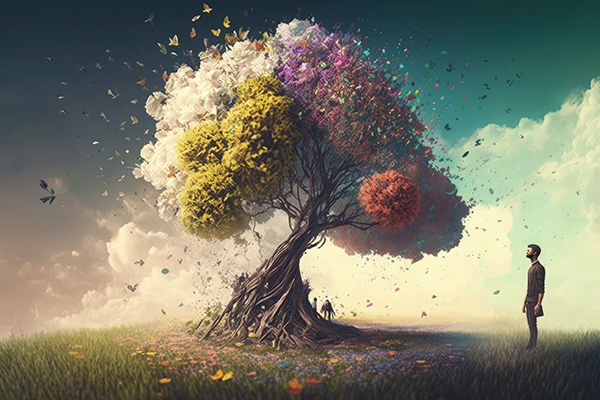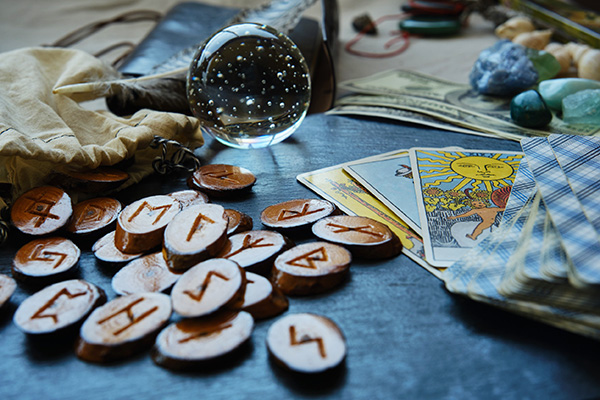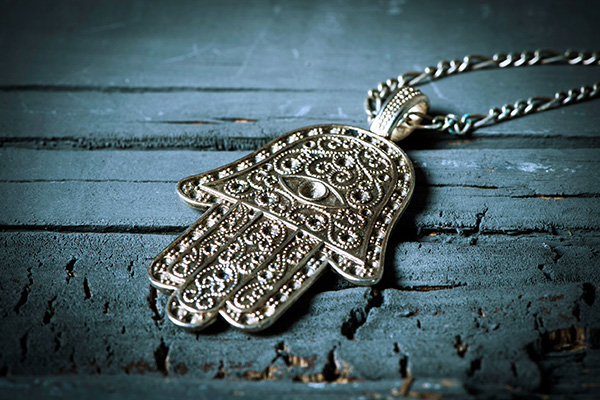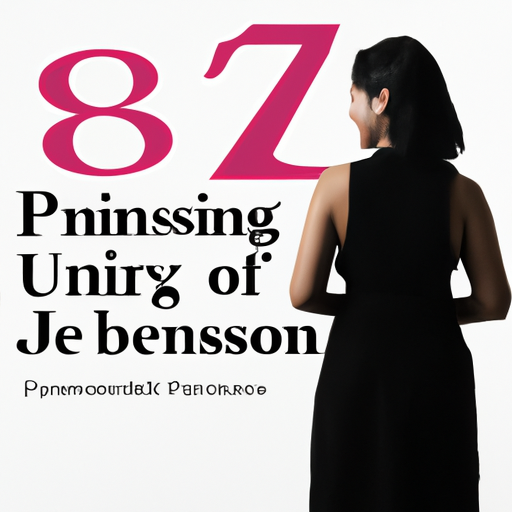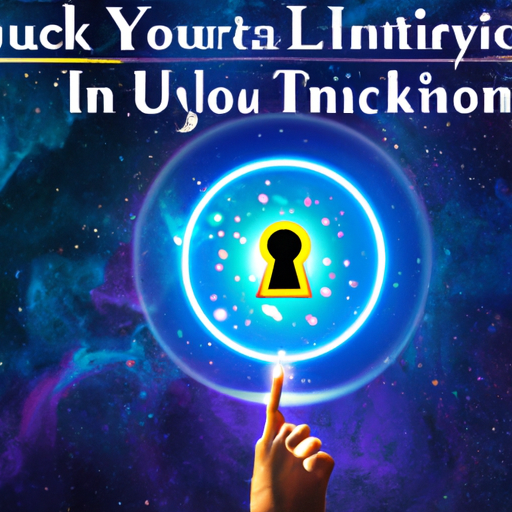The Significance of Making Money in Promoting Positive Outcomes
 Many individuals experience a dilemma between their pursuit of financial stability and prosperity and their strong spiritual convictions, resulting in inner turmoil and feelings of guilt. Popular sayings such as “money can’t bring happiness,” “money is the source of all evil,” and “you can’t take it with you” further contribute to this predicament.
Many individuals experience a dilemma between their pursuit of financial stability and prosperity and their strong spiritual convictions, resulting in inner turmoil and feelings of guilt. Popular sayings such as “money can’t bring happiness,” “money is the source of all evil,” and “you can’t take it with you” further contribute to this predicament.
But what if we changed our perspective? What if the journey to financial success and abundance is also the journey towards inner peace and greater satisfaction in our lives?
There is also the saying: “Money is a good servant, but a bad master.” What if money in the hands of kind, compassionate and conscious people is exactly what the world needs?
What if we transformed our perception of money from being inherently evil to being merely a means for spiritual development and personal satisfaction? What if we started viewing money as a positive and kind resource that has the potential to be utilized for the benefit of all?
As spiritual beings, we chose to incarnate into this very time-space reality, fully understanding the rules of this dimension. One of the rules we understood was the need for physical survival and material security in this world.
Many generations of ancestors who incarnated before us fought hard to survive here in physical form, inventing new and clever ways to make the struggle to keep body and soul together a little easier for us. In the process, they co-created the Earth reality as we know it today – a co-created reality that revolves around a monetary economic system, for better and worse.
A wise person should have money in their head, but not in their heart ~ Jonathan Swift
The Origins Of Money
Before the invention of money, people bartered, directly exchanging goods and services without the use of currency. Commonly bartered items included livestock, agricultural goods, olive oil, wine, pottery, food, clothing, and weapons. This system was prevalent in ancient civilizations such as Mesopotamia, Egypt, Greece, and Rome, as well as in medieval Europe and colonial America.
However, the barter system faced challenges in terms of determining fair exchanges and managing availability fluctuations. With the growth of trade, individuals started using items with inherent value like precious metals or commodities to simplify and standardize transactions. This eventually led to the establishment of more organized forms of exchange, including livestock and other natural objects that functioned as currency. For instance, cowrie shells gained widespread acceptance as a payment method in various regions of Asia, Africa, and Europe from 1200 BC onwards.
The shift from natural items to more uniform types of money resulted in the creation of coins in China approximately by 1000 BCE. These early coins were primarily composed of bronze, copper, and later on, valuable metals. In China, the concept of paper money was initially introduced during the 7th century. Nonetheless, it took many years for paper money to gain widespread acceptance, as countries like Sweden and the United Kingdom didn’t start issuing banknotes until the 17th century.
The Importance Of Community
Prior to the development of trade and bartering systems, early humans primarily relied on gathering, hunting, and fishing to sustain themselves. They resided in small communities that heavily emphasized sharing and cooperation for survival purposes. These societies were characterized by tightly-knit social groups, where resources were shared among members. By distributing crucial resources like food and shelter, the social cohesion within the group was strengthened, ultimately enhancing their overall chances of survival.
Before the establishment of trade and barter systems, human beings relied greatly on the mutual sharing of resources, knowledge, and skills within and occasionally among different groups for their survival. This era of human history underscores the significance of community and collaboration in the early societies of humans.
I believe that the main reason for the prevailing negative attitude towards money in spiritual communities stems from the fact that its introduction has led to a decline in our sense of unity, generosity, collaboration, and philanthropy. Consequently, greed, conflict, self-centeredness, and malevolence have become more prevalent in society. The perception that money lacks spirituality or is detrimental often arises from witnessing its misapplication or connecting it to greed and materialistic values.
Money, in its essence, is a tool with no inherent bias, and its effect depends on how it is utilized. When we approach it with a mindset of generosity, accountability, and purpose, money can promote spiritual values like empathy, appreciation, and interconnectedness. By making financial choices that align with our ethical beliefs and heartfelt desires, we can make money a significant part of our spiritual path. It can not only contribute to our personal development but also serve the greater good.
Caring for oneself is synonymous with caring for others, and vice versa, as stated by the Dalai Lama.
I exist because we are together.
Our ancestral culture of communal living, shared survival, and mutual support is not entirely lost and can still be found today in certain indigenous worldviews and cultural traditions around the world that still value cooperation, community support, and mutual respect, such as:
Aloha in Hawaii, which embodies love, peace, and compassion.
The concept of Bayanihan in the Philippines focuses on fostering community unity and collaboration.
Fihavanana in Madagascar, which emphasizes kinship, friendship, and good neighborliness.
Mitakuye Oyasin from the Native American Lakota tribe, which translates to “all my relations” or “we are all related” reflecting the interconnectedness of all beings and the earth, highlighting a deep respect for nature, community, and the interconnected web of life.
Ubuntu, originating from Southern Africa, expresses the idea of “I am because we are,” highlighting the importance of community, compassion, sharing, and interconnectedness.
In Tanzania, Ujamaa is a movement that encourages the practice of communal and cooperative economics within families.
This ancient survival strategy of our ancestors is still alive in our hearts and embedded in our cellular memories. As a species, we are wired for sharing, caring, and belonging.
The Science Of Sharing
The idea that humans are naturally social beings who have evolved to cooperate and share is supported by research in disciplines like psychology, evolutionary biology, and neuroscience. Numerous studies indicate that acts of kindness and cooperation elicit positive emotions, enhance social connections, and become widespread within communities. This implies that sharing and caring are not merely moral decisions, but are fundamental aspects of our biological constitution, promoting personal happiness and the preservation of communities.
Science has also shown that charity can have positive effects on both physical and mental health. Engaging in acts of generosity can reduce stress, lower blood pressure, and increase longevity. It has also been linked to greater happiness, satisfaction, and a sense of purpose in life. This suggests that the benefits of charity extend beyond the recipients of generosity to include significant improvements in the health and well-being of the givers as well.
Blessed is the person who sees the need, recognizes the responsibility, and actively becomes the answer ~ William Arthur Ward
Choosing Your Money Mindset
The issue lies not with money itself, but with how we decide to utilize it or neglect it. We have the power to view money as a source of positivity and spiritual enrichment, rather than just a means to benefit ourselves. Money can be seen as a valuable asset for creating beneficial transformations and improving global well-being.
Do you find this concept to be difficult or uneasy? Do you immediately have negative thoughts regarding greed, or ideas about the unethical behavior of wealthy individuals? Excellent! Take note of that. These instinctive responses are precisely the beliefs that might hinder your progress towards attracting more money and utilizing it to improve the world!
Selecting the perspective that money serves as a mere instrument for spiritual well-being compels us to confront the feelings of shame, judgment, criticism, and other negative associations we associate with money. Subsequently, these emotions and beliefs lead us to consciously or subconsciously distance ourselves from money. Various manifestations of this can occur, such as encountering unforeseen expenses when we come into a large sum of money, being passed over for a promotion, or depending on a harmful source of income like child support from an uncooperative former spouse. It is no surprise that many individuals consider money to be negative or wicked.
Once we recognize these ingrained misconceptions and their detrimental effects on our lives, we can start opting for alternative decisions, ultimately altering the overall mindset and improving our world. When conscious individuals with compassionate intentions possess wealth, it will be redistributed and enrich everyone’s lives.
Transforming money into a spiritual resource and ally for good is about making conscious choices with our finances that reflect a commitment to a greater purpose beyond individual needs, with the goal of contributing to the collective good and spiritual growth.
As someone who is in touch with their spirituality, reflect on the type of relationship you desire to have with money going forward. Can you think of any thoughts or beliefs regarding money that could enhance your perception and connection with this valuable aspect of our lives? Ultimately, the decision lies with you.
Remember that when you leave this earth, you can take with you nothing that you have received—only what you have given: a full heart enriched by honest service, love, sacrifice, and courage ~ St. Francis of Assisi
The Root Of All Good
Rather than constantly dwelling upon the negative aspects of money, such as greed and corruption, shift your mindset to view money as a force for good. Contemplate how increasing your wealth can empower you to make positive changes in the world. It may be beneficial to replace the notion that money is inherently evil with daily affirmations promoting its potential for good.
Wealth is mine by divine right.
I fulfill the role of managing wealth for the benefit of both myself and others in my community.
I embrace the concept that money is a manifestation of divine love, and I am open to attracting greater abundance in my life at this moment.
Money flows to me effortlessly as a reflection of the universe’s abundance.
My money is conduit for good.
I utilize my financial resources to make a beneficial impact on the world.
The act of spending money spreads love and plays a part in improving the overall welfare of the world.
Wealth allows me to give generously, sharing the divine bounty I am blessed to receive.
My prosperity is a tool for growth, healing, and kindness.
Money As A Gratitude Practice
In the spiritual community, there is often a discussion about the concepts of love, light, thoughts, and prayers. Additionally, there is a strong emphasis placed on the significance of expressing gratitude and appreciation. However, perhaps it is time to give more attention to another well-known phrase and truly take action rather than merely speaking about it.
In fact, using money as a spiritual tool for the greater good should be part of our gratitude practice by actively recognizing and appreciating the abundance in our lives and choosing to share it in meaningful ways. These actions create a cycle of giving and receiving that enriches both the giver and the receiver, and fosters a deeper sense of connection and gratitude toward the community and the world.
There is a reason religious and spiritual traditions encourage setting aside a portion of your income for charitable purposes. This practice strengthens gratitude and teaches detachment from wealth.
You wander from room to room hunting for the diamond necklace that is already around your neck! ~ Rumi
Ways To Make Money A Blessing
Below are some suggestions on how you can start utilizing money as a spiritual instrument for the betterment of your community:
Engage in conscious expenditure to ensure that your financial resources endorse favorable and ethical decisions (essentially utilizing your wallet to vote for the type of society you desire).
Promote initiatives within the community that foster sustainability and enhance well-being.
Put your money into businesses that value sustainable practices and make a positive impact on society.
Provide funding for individuals who do not have sufficient opportunities to access high-quality educational materials and resources.
Offer monetary aid to people who are facing financial hardships within your local area.
Participate in health initiatives or endeavors focused on enhancing the well-being of the community.
Encourage and promote creative expression through art, which enhances cultural heritage.
Support and organize events that encourage the bond within the community and foster personal development in spirituality.
Promote and encourage the development of eco-friendly technology and initiatives for preserving the environment.
Support the causes you are passionate about, be it safeguarding the environment, promoting social equality, or aiding religious institutions.
Support and promote acts of kindness by funding a person’s meal, offering a substantial gratuity, or assisting an unknown individual in a difficult situation.
These are only some suggestions, and the options are limitless. Keep in mind that the crucial aspect is to utilize money purposefully and attentively. By making mindful decisions, you have the power to turn it from a means to solely benefit yourself into a catalyst for creating a positive impact globally.
Additionally, it is important to allocate resources towards enhancing your spiritual growth and well-being. This can entail participating in educational courses, seeking solace in retreats, delving into insightful books, or embarking on meaningful pilgrimages. By nurturing your inner self, you will naturally radiate positive energy and become a beacon of light to positively influence those in your vicinity.
Encourage yourself to think more frequently about the incredible experiences and presents you would like to share and give to others, and the beneficial influence this would have on the world. Believe me, this will gradually attract more prosperity and abundance into your life. Altering your perception and understanding of money is crucial in contributing to the transformation of the world.
|
Megan possesses innate abilities that allowed her to have vivid dreams and premonitions at an early age. Over the span of 30 years, she has received consistent guidance from Guides, Archangels, Ascended Masters, and the Ashtar Command. Megan began offering sincere and caring readings and healings in 1993, starting with her close circle and later establishing a professional practice in 2006. She is certified in various psychic and healing techniques, including Reiki and Angel Work. Megan specializes in relationship readings, providing comprehensive insights on the duration of a relationship, the partner’s honesty, and their future intentions. With a global client base, Megan has consistently delivered accurate readings. She deeply values and appreciates the loyalty of her clients, many of whom have been with her since the beginning of her practice. Contact Megan at PsychicAccess.com today for a profoundly transformative psychic reading. |
The Importance of Earning Money in Advancing Positive Results
Earning money has always played a vital role in society, and its importance cannot be underestimated. While some argue that money is the root of all evil, it is crucial to recognize that money, when used responsibly, can foster positive outcomes and contribute to the overall well-being of individuals and communities.
One of the primary ways in which earning money promotes positive results is by providing financial security. Money allows individuals to meet their basic needs, such as food, shelter, and healthcare. When people have access to these necessities, they can focus on personal growth, education, and pursuing their passions. Financial security also reduces stress and anxiety, leading to improved mental health and overall well-being.
Furthermore, earning money empowers individuals to invest in their future. Whether it be saving for retirement, starting a business, or pursuing higher education, money provides the means to create a better future. By investing in themselves, individuals can acquire new skills and knowledge, enhancing their employability and opening doors to new opportunities. This not only benefits the individual but also contributes to societal growth and development.
Earning money also plays a crucial role in philanthropy and giving back to the community. Wealthy individuals and corporations have the resources to make significant contributions to charitable causes and support organizations that strive for positive social change. These contributions can fund research and development, provide scholarships, improve infrastructure, and support initiatives addressing pressing societal issues like poverty, education, and healthcare.
Moreover, earning money fosters innovation and economic growth. Entrepreneurs and businesses create jobs, stimulate economic activity, and drive technological advancements through their pursuit of profits. This leads to increased productivity, improved living standards, and an enhanced quality of life for individuals in society. The wealth generated from successful businesses can be reinvested into research and development, creating a cycle of innovation that benefits society as a whole.
In addition to these direct benefits, earning money also has indirect positive outcomes. When individuals have disposable income, they can contribute to the local economy by spending on goods and services. This, in turn, supports local businesses and stimulates economic growth. Increased economic activity leads to job creation, higher wages, and improved living conditions for all members of society.
However, it is essential to acknowledge that the significance of earning money lies not only in the act of gaining wealth but also in how it is utilized. Responsible money management, ethical business practices, and mindful consumerism are crucial for promoting positive outcomes. It is important to ensure that money is not accumulated at the expense of others or the environment, but rather through sustainable and socially responsible means.
In conclusion, earning money holds great importance in advancing positive outcomes. Financial security, investment in personal growth, philanthropy, innovation, economic growth, and improved living standards are just a few examples of the positive impacts that earning money can have on individuals and society. However, it is vital to approach wealth creation responsibly and ethically to ensure that the benefits are shared by all and contribute to a sustainable and inclusive future.


